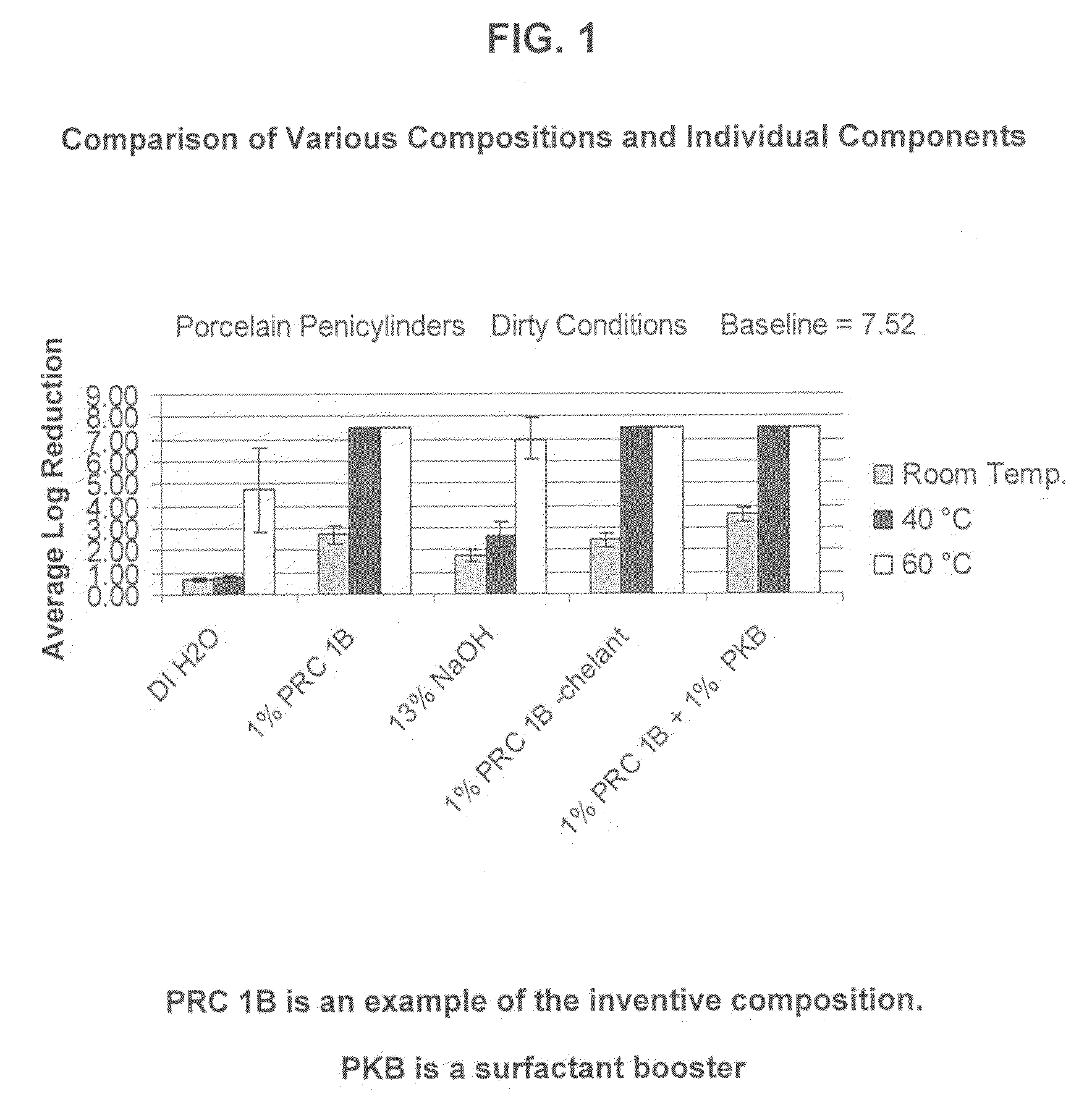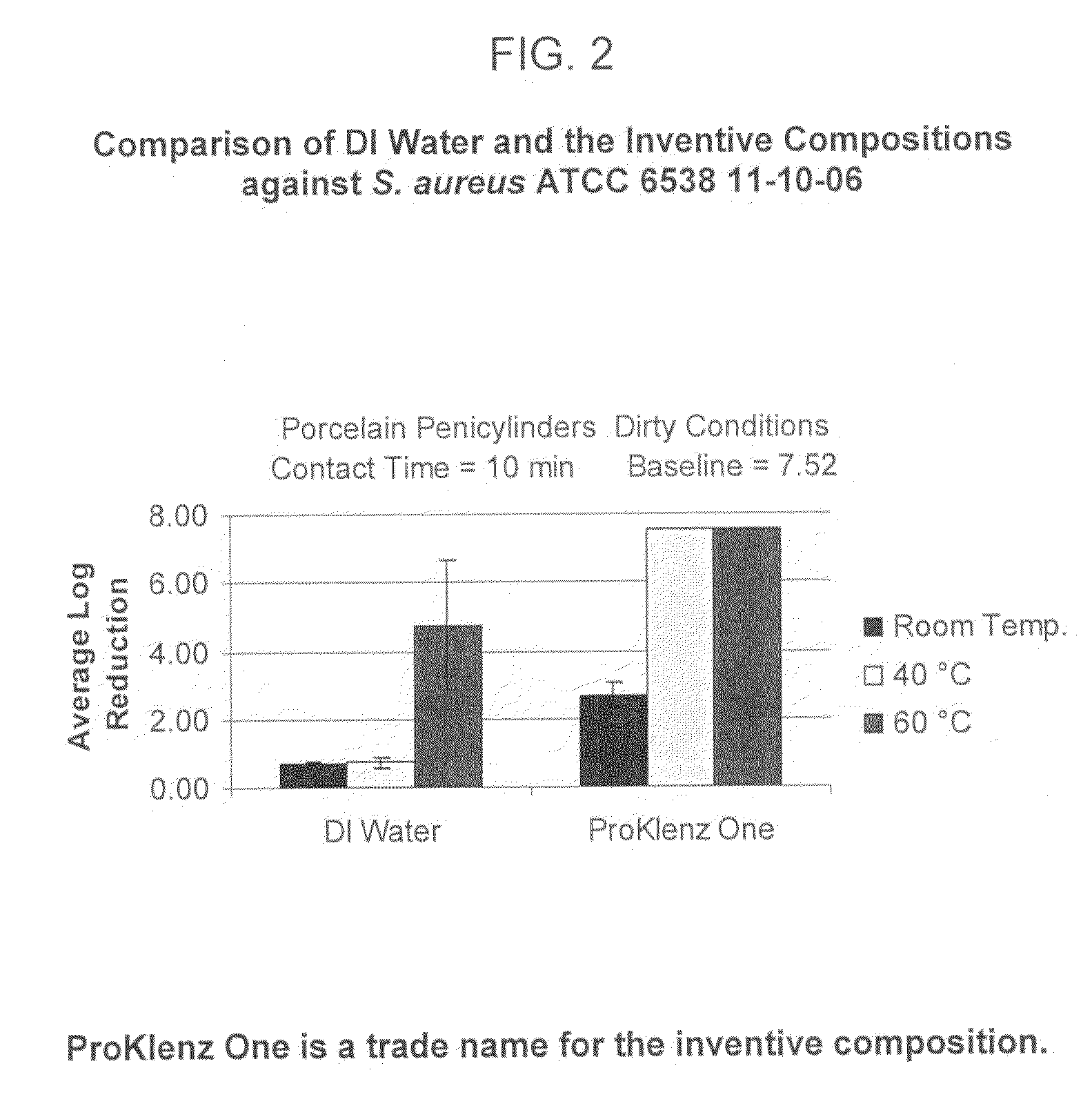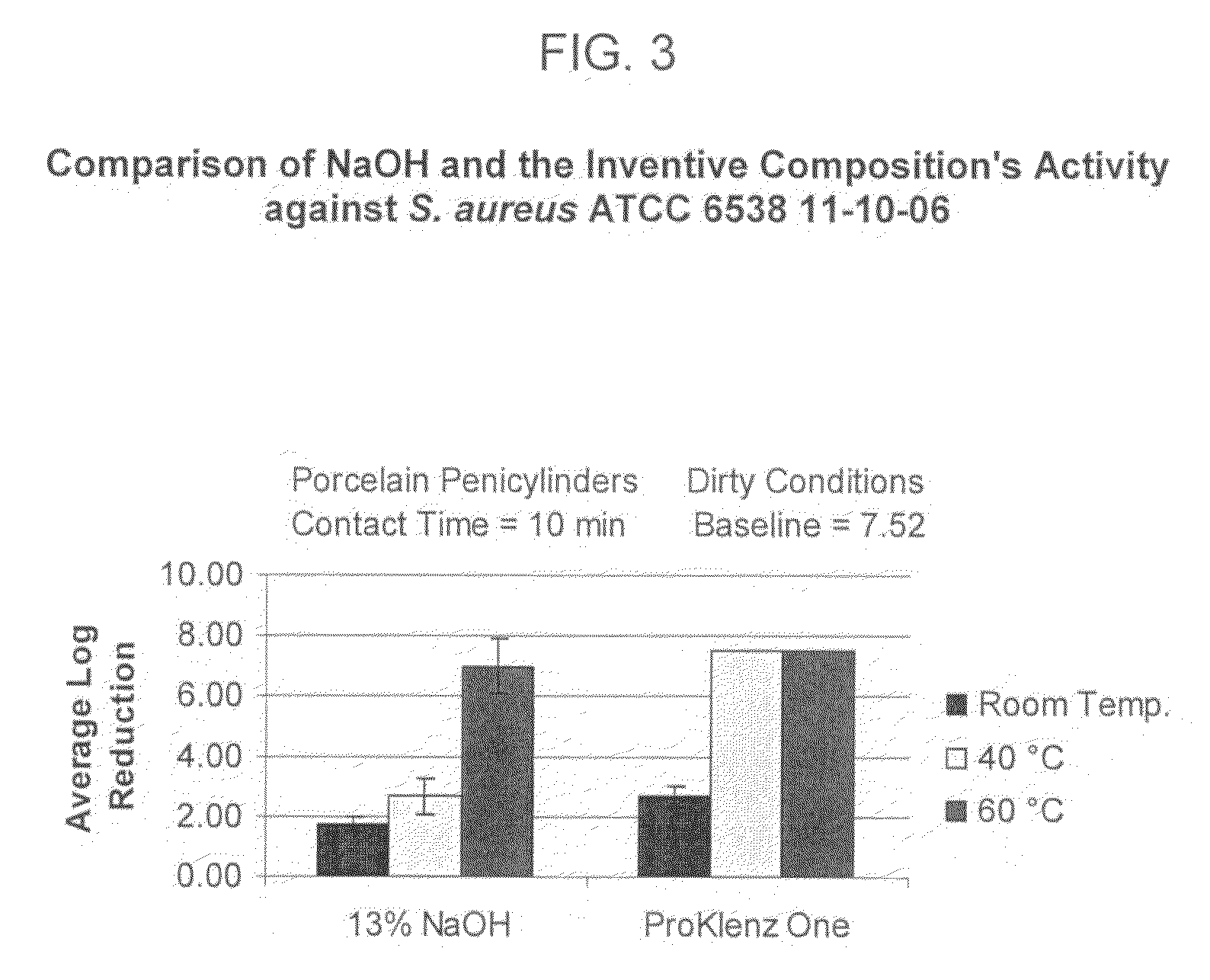Biodegradable alkaline disinfectant cleaner with analyzable surfactant
a disinfectant cleaner and biodegradable technology, applied in the field of alkaline cleaning compositions, can solve the problems of difficult to achieve optimal cleaning composition, etc., to achieve enhanced antimicrobial, including virucidal, effect, and easy determination of cleaning composition removal
- Summary
- Abstract
- Description
- Claims
- Application Information
AI Technical Summary
Benefits of technology
Problems solved by technology
Method used
Image
Examples
example 1
Antimicrobial / Virucidal Efficacy
PRC 1B Formulation: The following composition was tested:
[0074]
RM NameWt. %FunctionBerol 5052.0%Nonionic Surfactant / Alcohol EthoxylateBerol 5081.0%Nonionic Surfactant / Alcohol EthoxylateAG 62064.0%Nonionic Surfactant - Alkylglucoside / Hydrotrope / 75% ActiveSodium Hydroxide26.0% Active Ingredient Disinfectant Claims / (50%)Source of AlkalinitySodium Xylene2.5%Anionic Surfactant - Hydrotrope / Sulfonate (40%)Analyzable SurfactantTrilon M (Trisodium 10%Chelating AgentMethylglycinediaceticAcid - 40%)Water54.5% Solvent
[0075]The above example of the inventive compositions was tested under hospital grade disinfectant (test conditions: 1%@60° C., 250 ppm hard water, 5 minutes). The two studies for the virucidal / poliovirus efficacy used different conditions (Test Condition 1: 1%@60° C., 250 ppm hard water, 10 minutes; Test Condition 2: 3%@ RT, DI Water, 30 minutes). Observed results indicated that the composition met hospital grade disinfect and virucidal requirement...
example 2
Effect of Temperature / Ingredients
[0083]In order to confirm that the antimicrobial activity was not solely attributable to elevated temperature, the aqueous alkaline cleaning composition was compared to hot DI (deionized) water. FIG. 2 reflects the data obtained by the comparison and demonstrates that the synergistic combination of components was responsible for the enhanced antimicrobial activity and not simply an elevated temperature.
[0084]In order to confirm further that the antimicrobial activity was not solely attributable to alkalinity, the inventive composition was compared to a sodium hydroxide control containing the same active percentage as the composition. FIG. 3 reflects the data obtained by the comparison and demonstrates that NaOH alone is not responsible for the enhanced antimicrobial activity.
[0085]Table 4, below, shows results obtained which clearly indicated that the achieved microbiological efficacy is the result of the entire composition comprising NaOH, chelant, ...
example 3
Effect of Concentration and Time
[0087]Table 5 shows the activity of the inventive composition in the presence of 5% fetal bovine serum soil load at room temperature with inoculated stainless steel penicylinders. Starting populations are listed in parentheses.
[0088]
TABLE 5ContactLog ReductionTimefor 1% of theLog Reduction forOrganism(Min.)Product3% of the ProductS. aureus ATCC 6538103.23 (7.51)7.51 (7.51)20N / A6.88 (6.88)305.52 (7.51)7.51 (7.51)P. aeruginosa ATCC107.82 (7.82)7.82 (7.82)1544220N / A7.89 (7.89)307.82 (7.82)7.82 (7.82)S. enterica ATCC 10708107.93 (7.93)7.93 (7.93)20N / A7.99 (7.99)307.93 (7.93)7.93 (7.93)
[0089]The above results indicate that, at temperatures lower than 60° C., the inventive composition achieved excellent results with increased contact time. With increased contact time or increased concentration, antimicrobial activity is improved even at room temperature, demonstrating versatility of the formulation.
[0090]By testing characteristic gram positive and gram nega...
PUM
| Property | Measurement | Unit |
|---|---|---|
| ultraviolet light wavelength | aaaaa | aaaaa |
| temperature | aaaaa | aaaaa |
| temperature | aaaaa | aaaaa |
Abstract
Description
Claims
Application Information
 Login to View More
Login to View More - R&D
- Intellectual Property
- Life Sciences
- Materials
- Tech Scout
- Unparalleled Data Quality
- Higher Quality Content
- 60% Fewer Hallucinations
Browse by: Latest US Patents, China's latest patents, Technical Efficacy Thesaurus, Application Domain, Technology Topic, Popular Technical Reports.
© 2025 PatSnap. All rights reserved.Legal|Privacy policy|Modern Slavery Act Transparency Statement|Sitemap|About US| Contact US: help@patsnap.com



